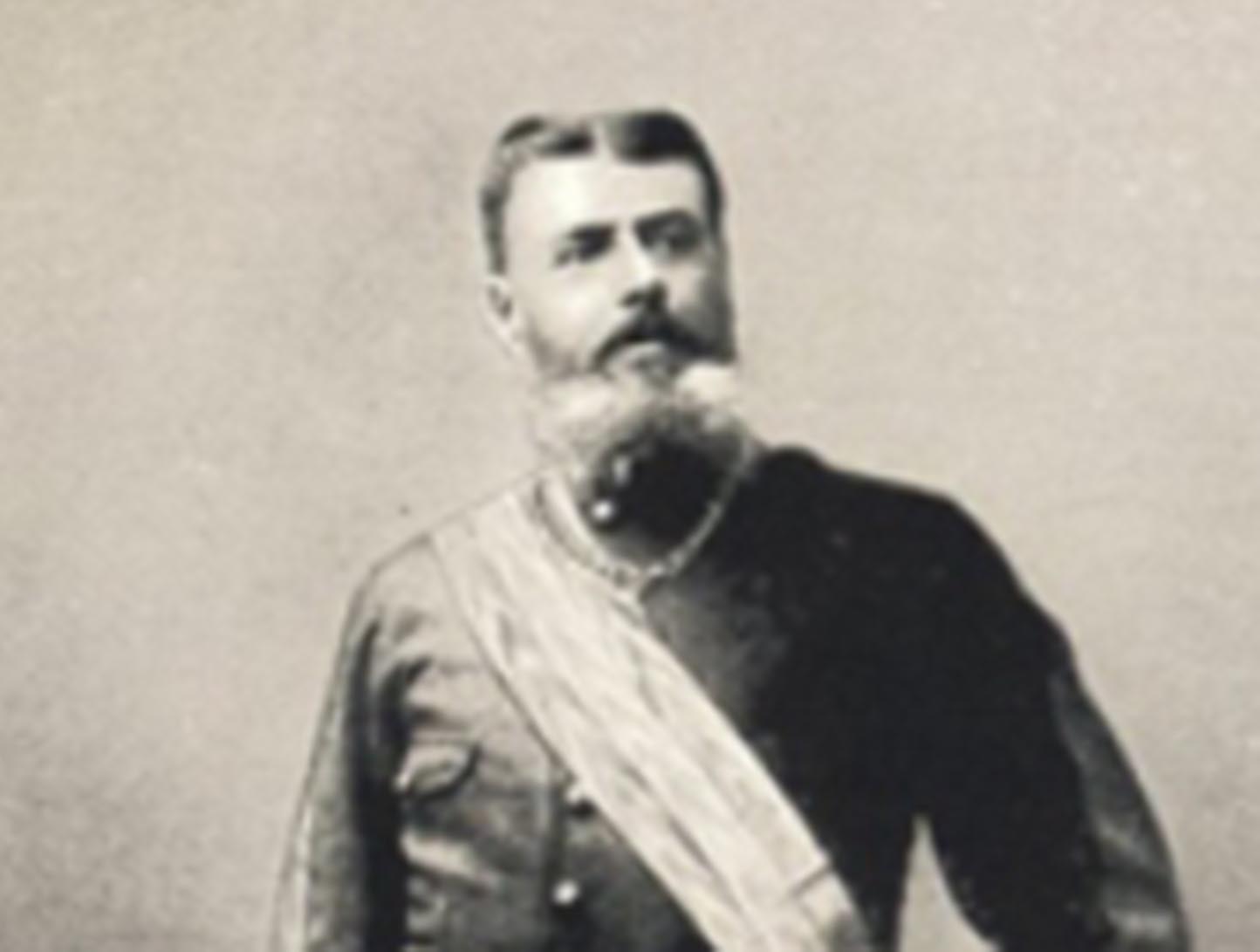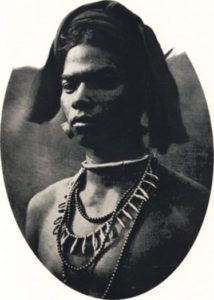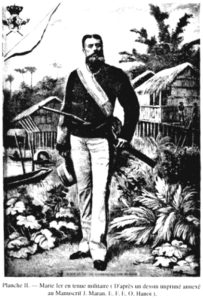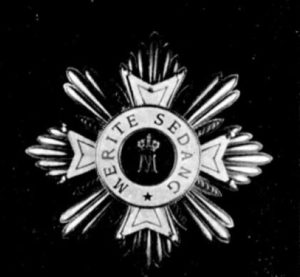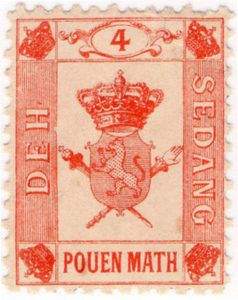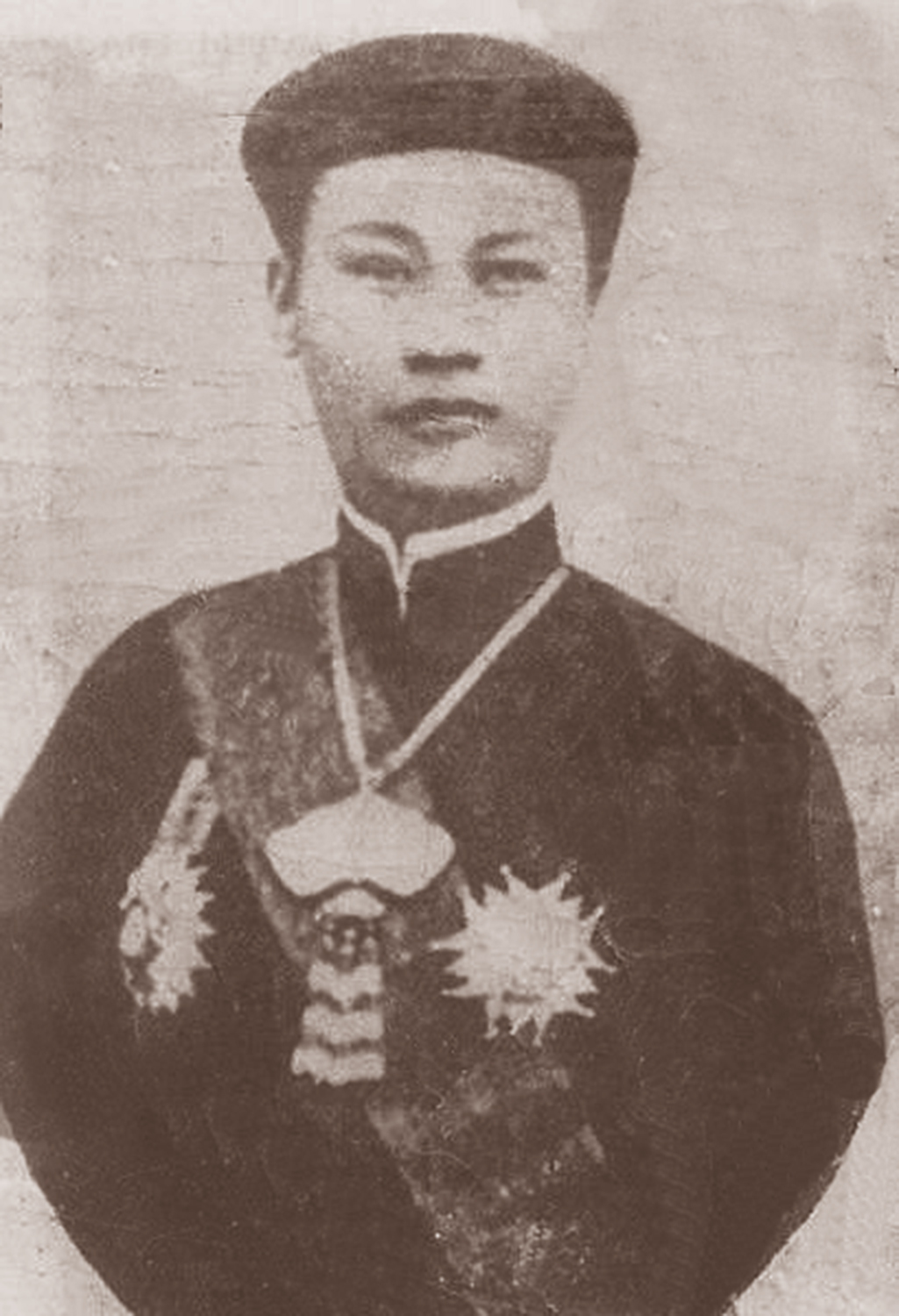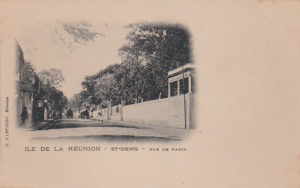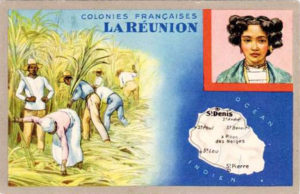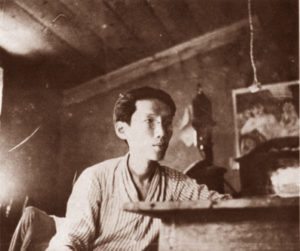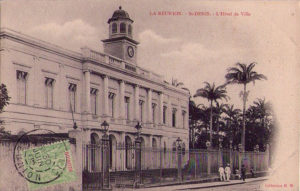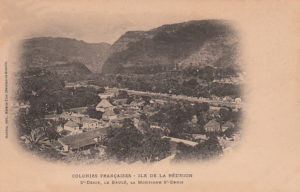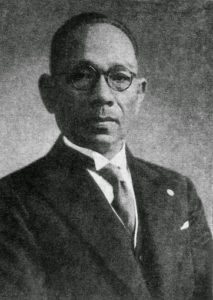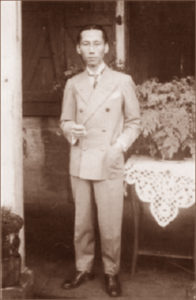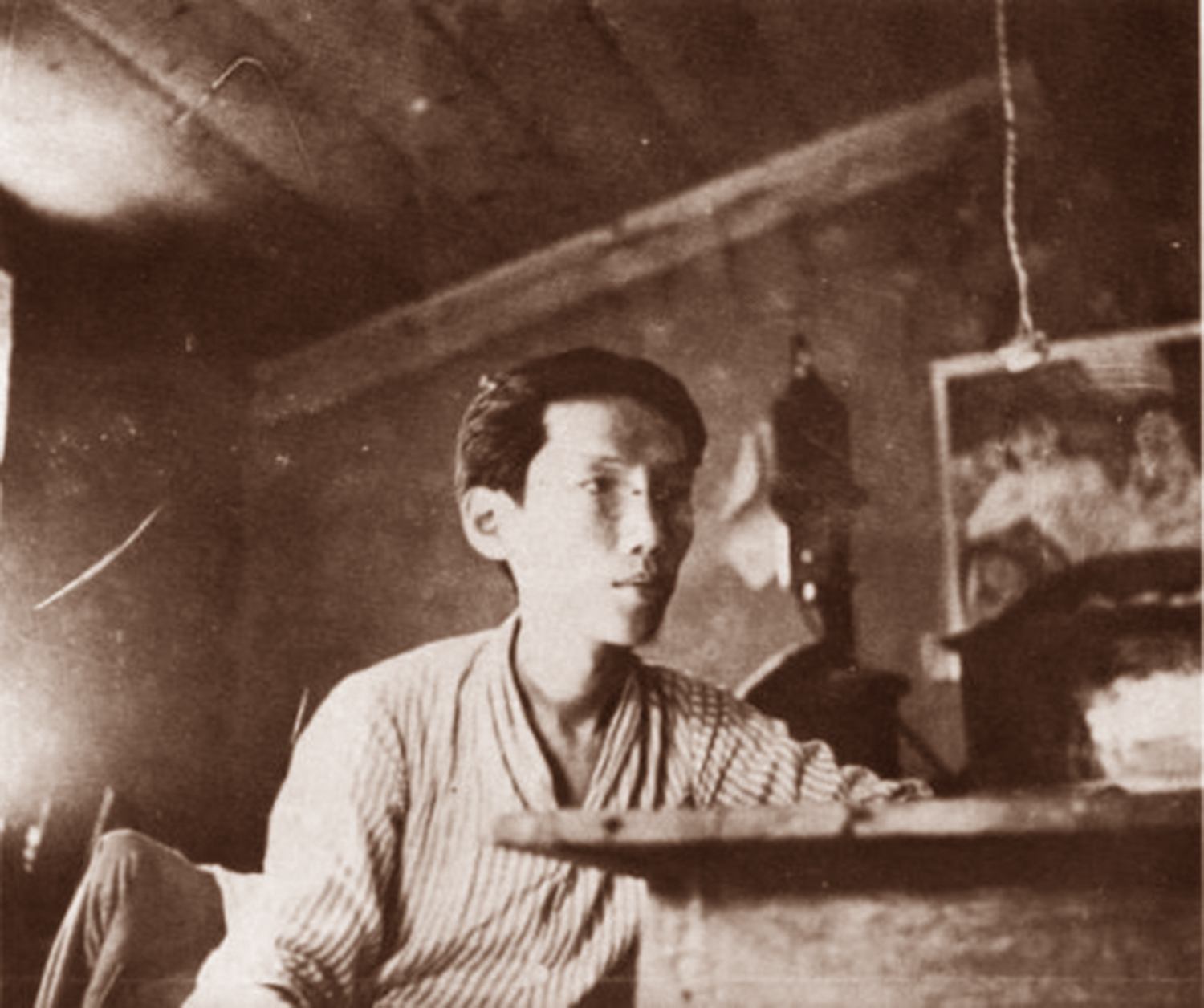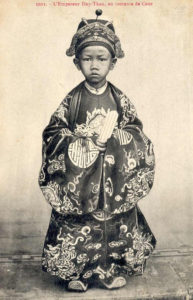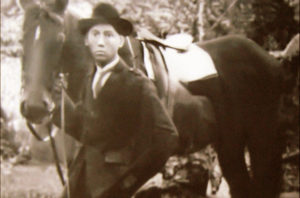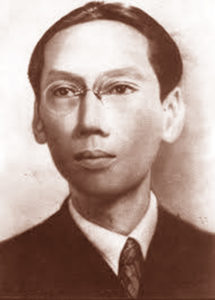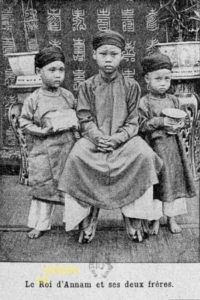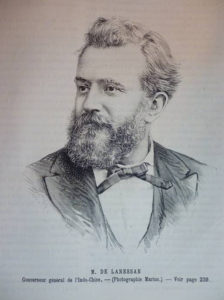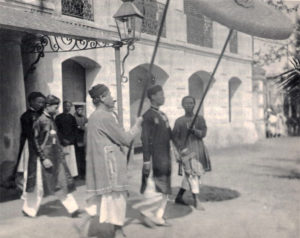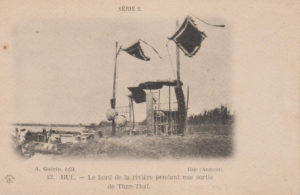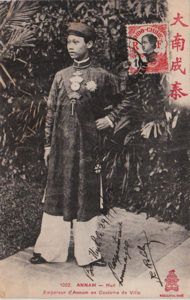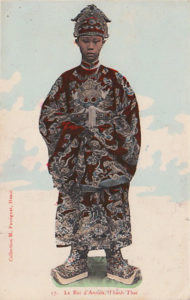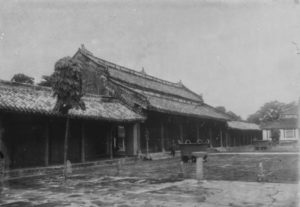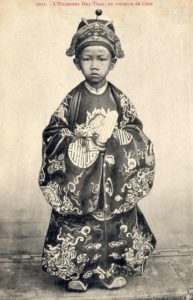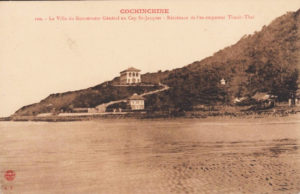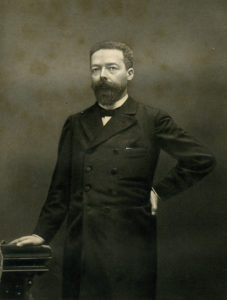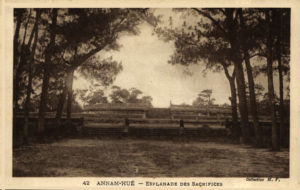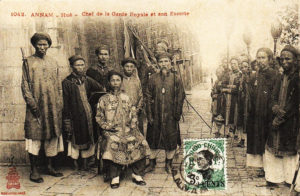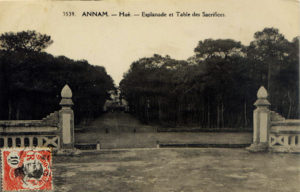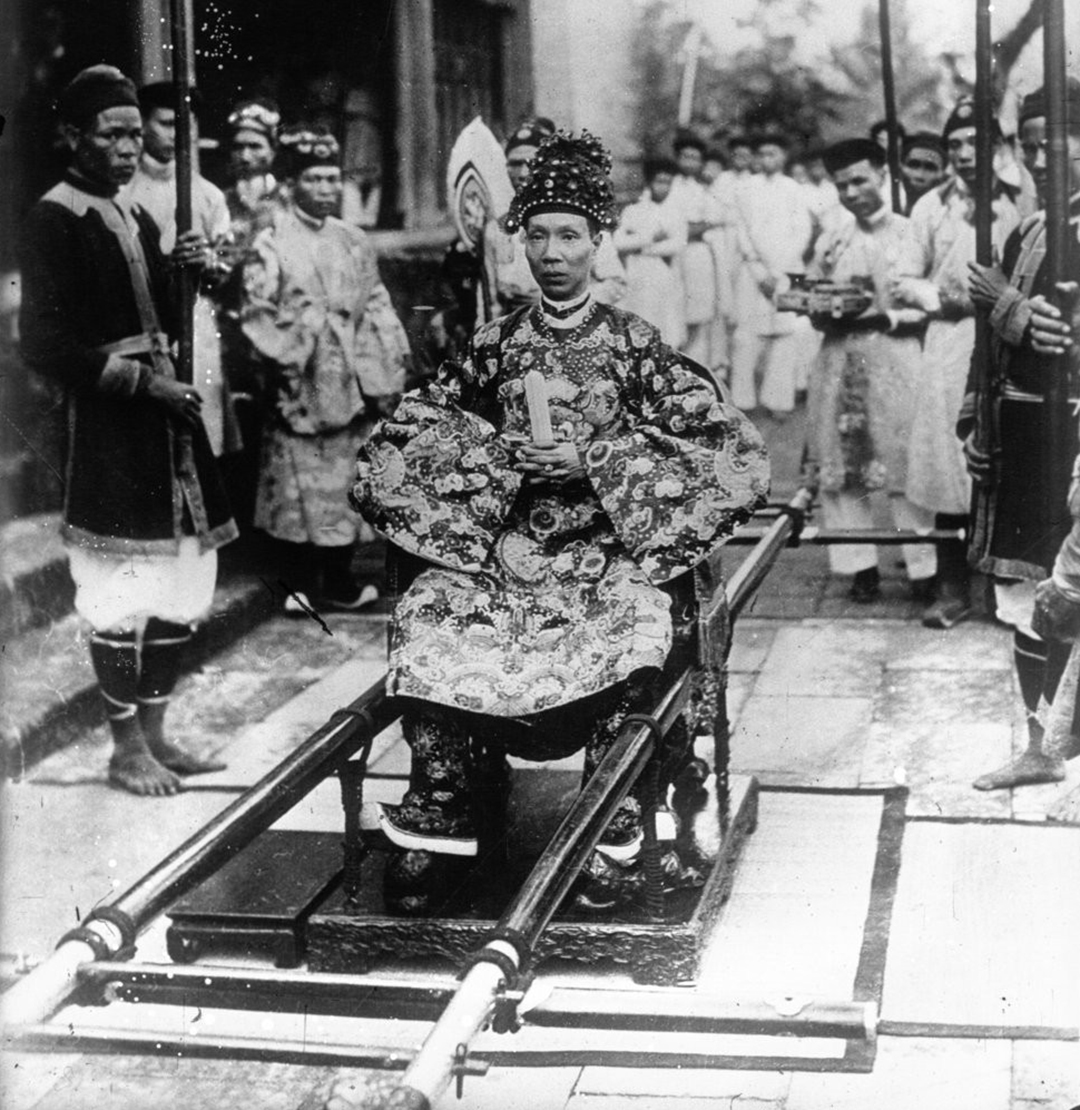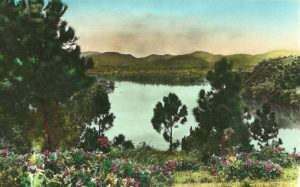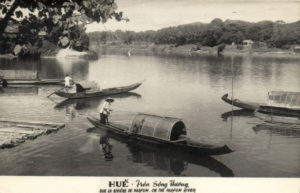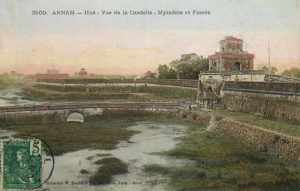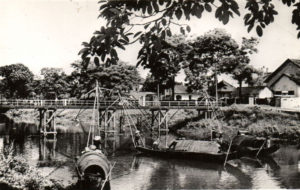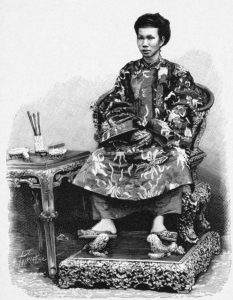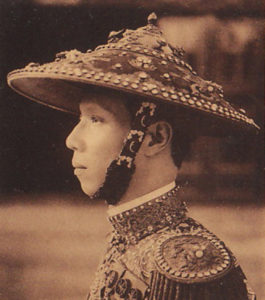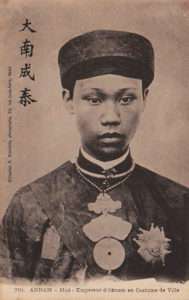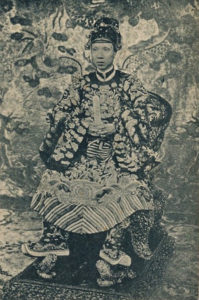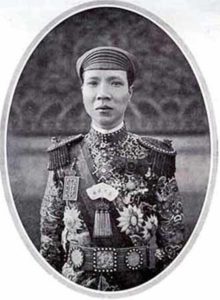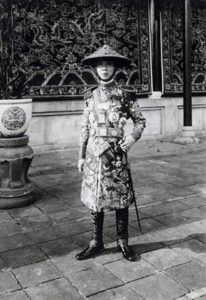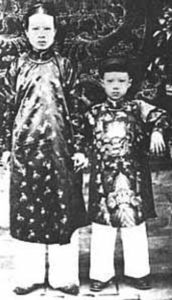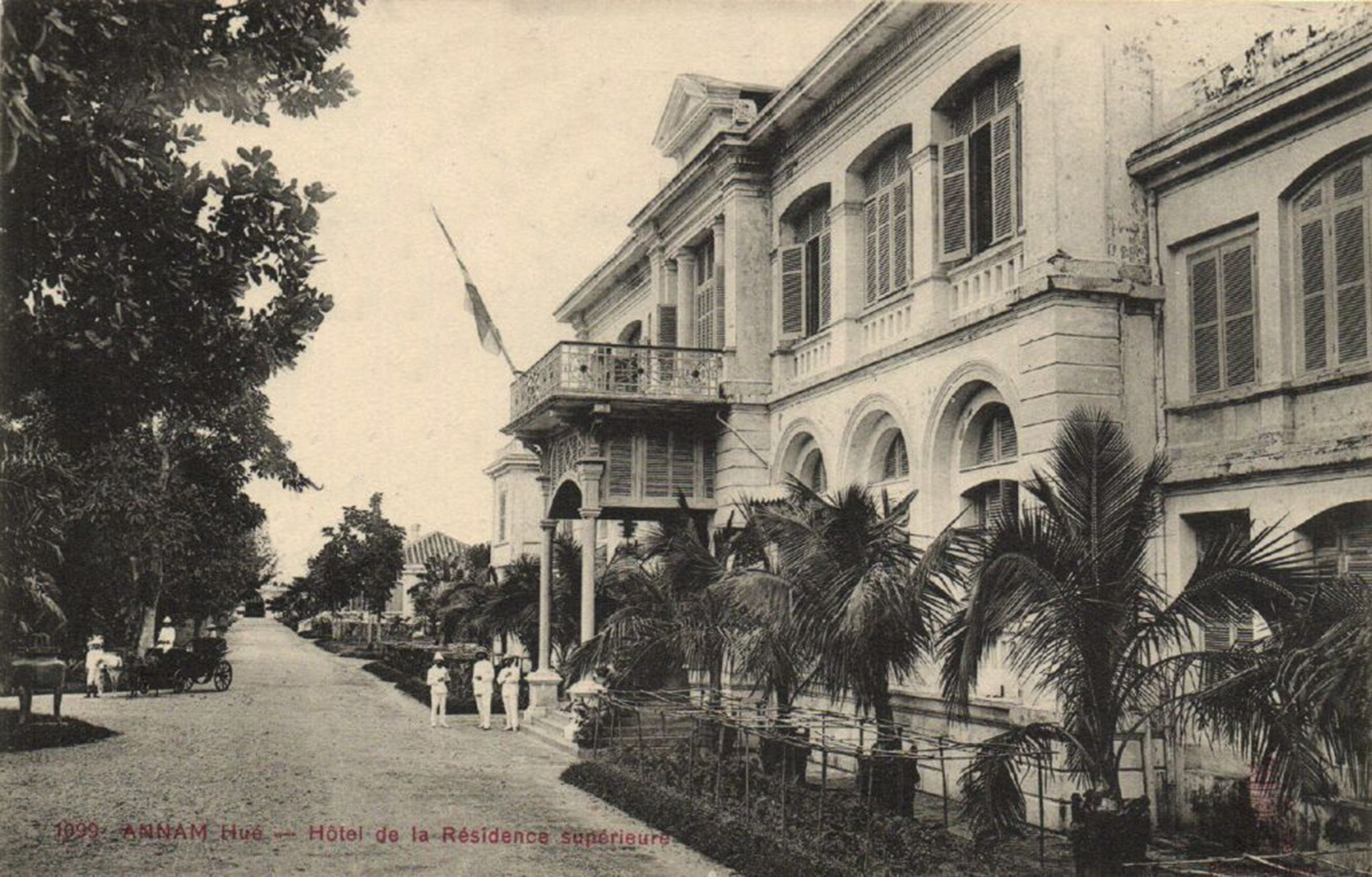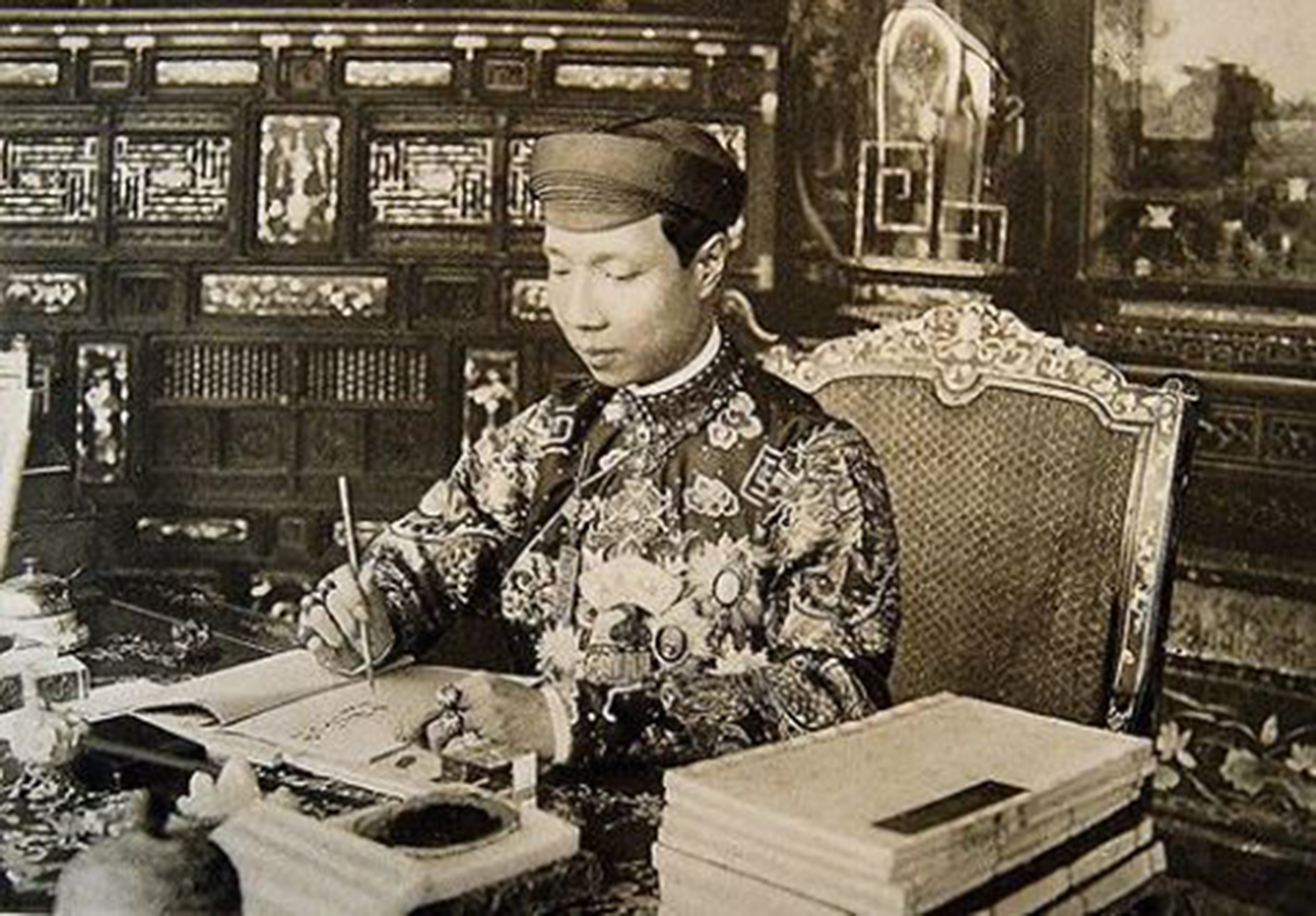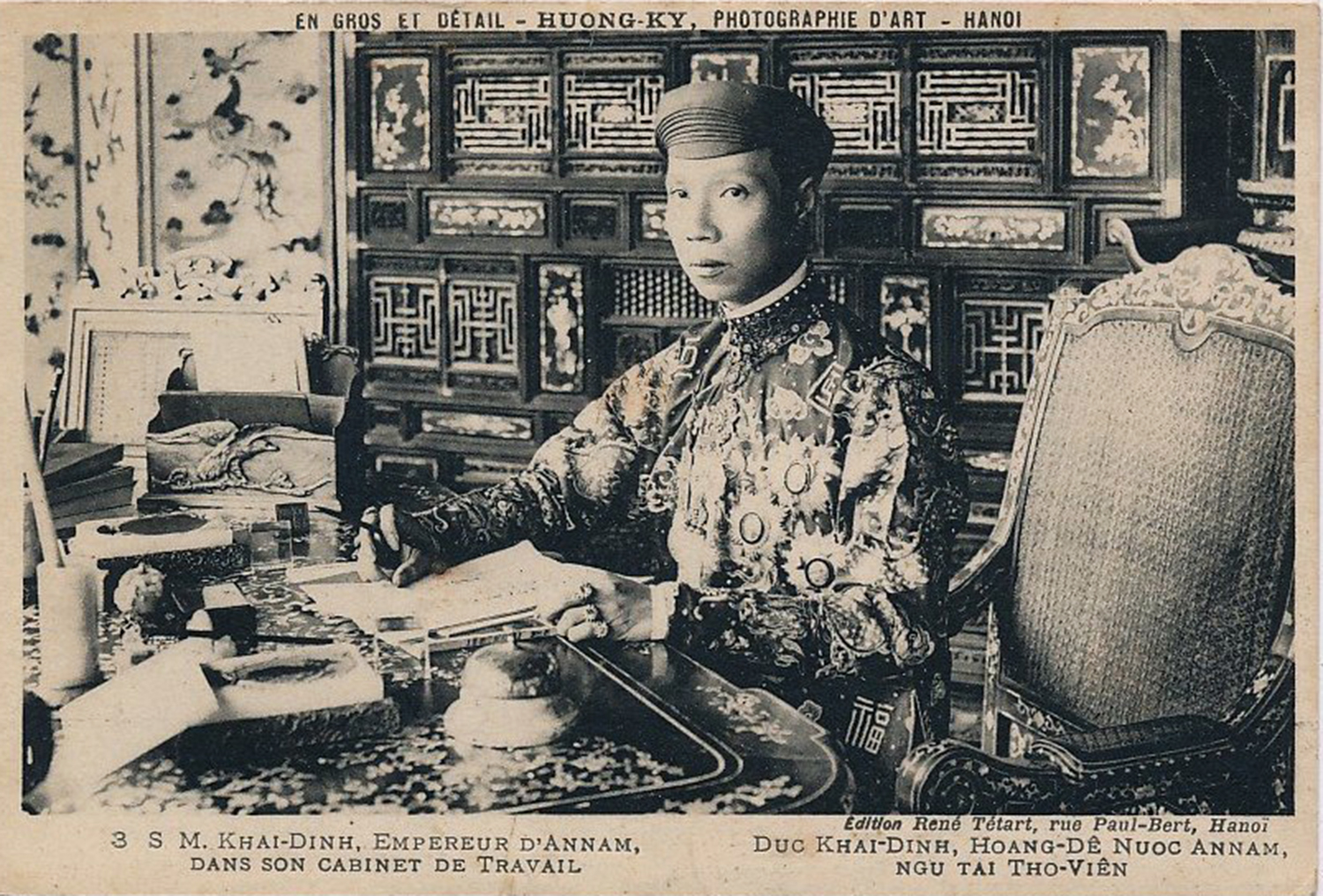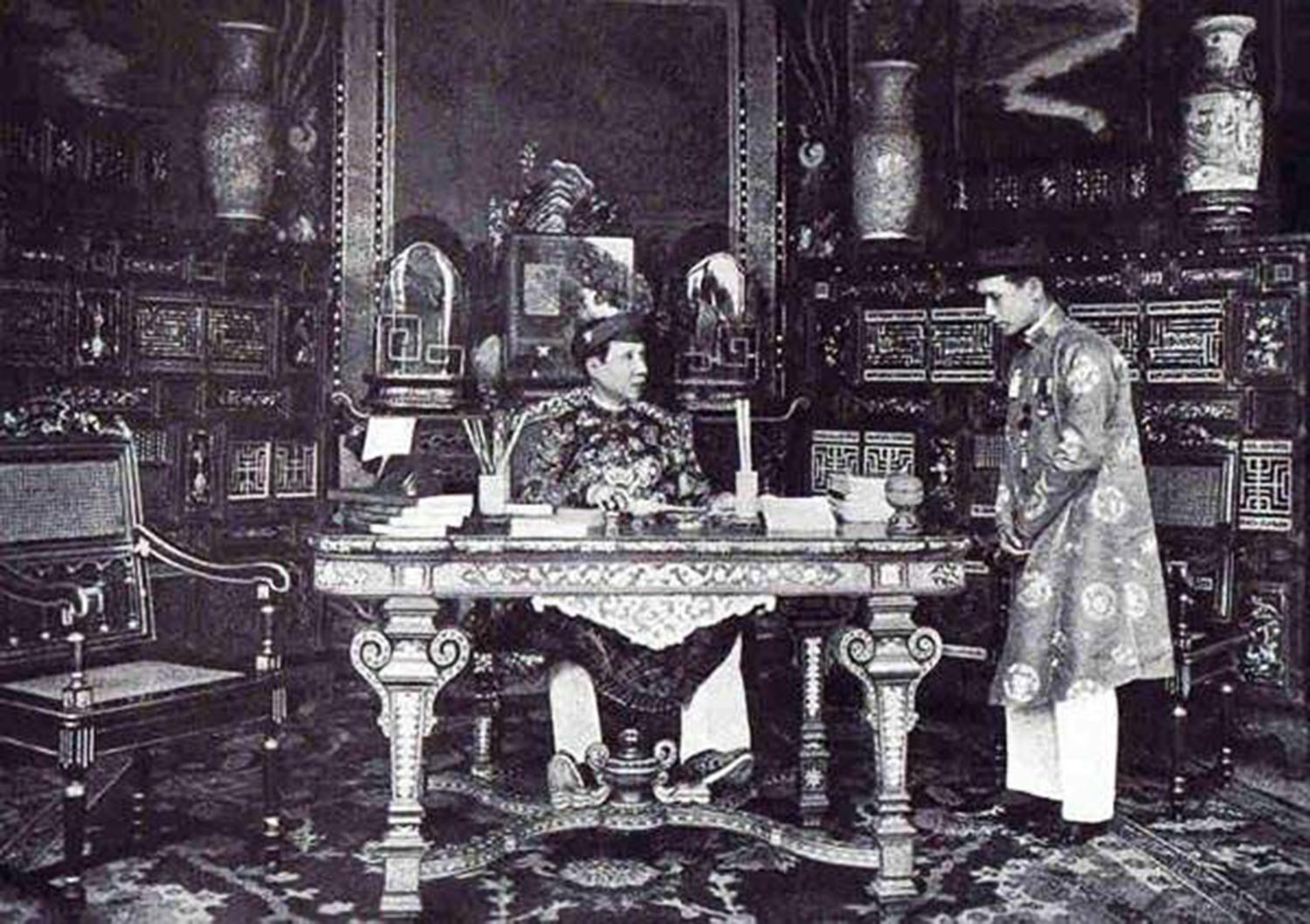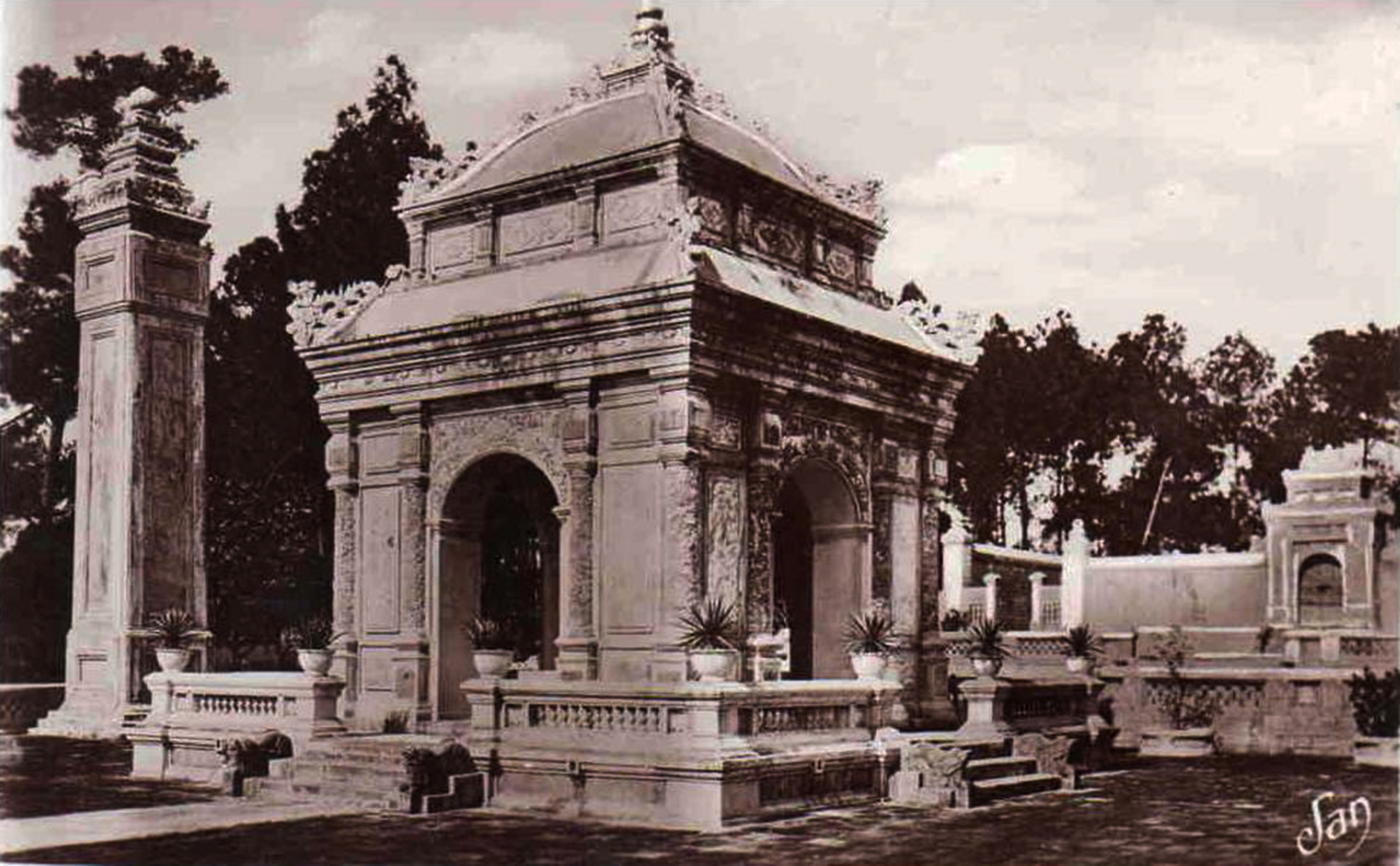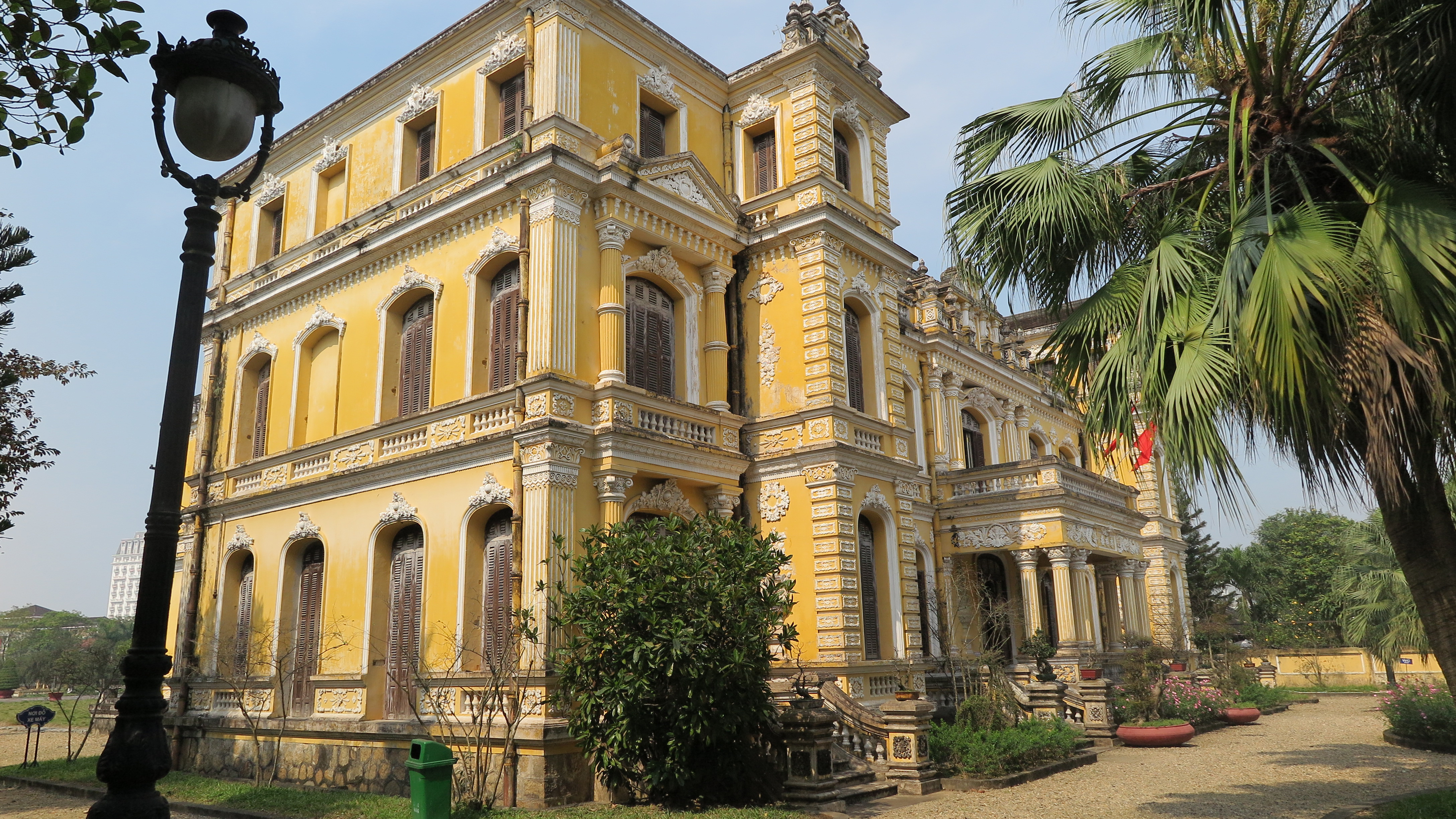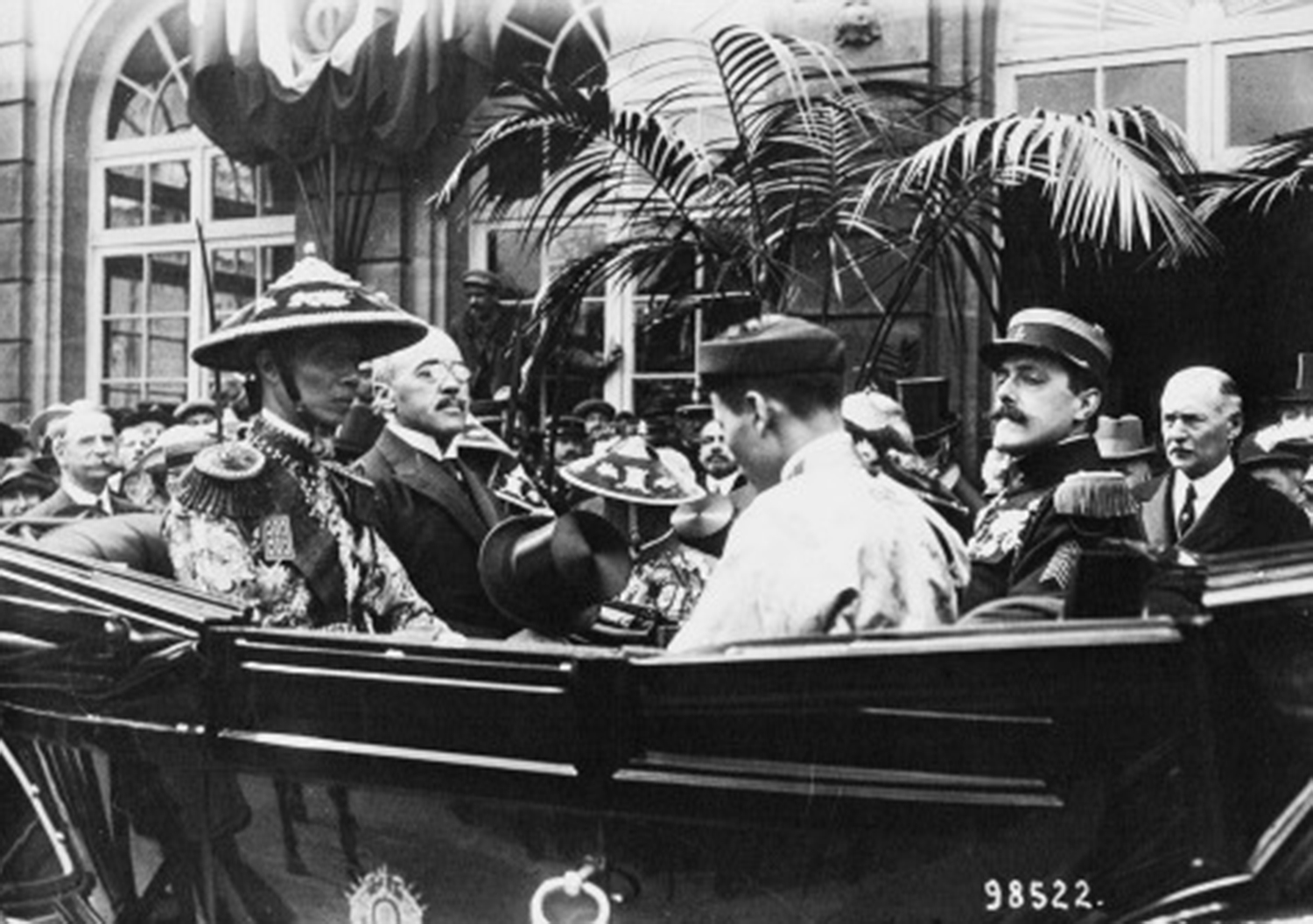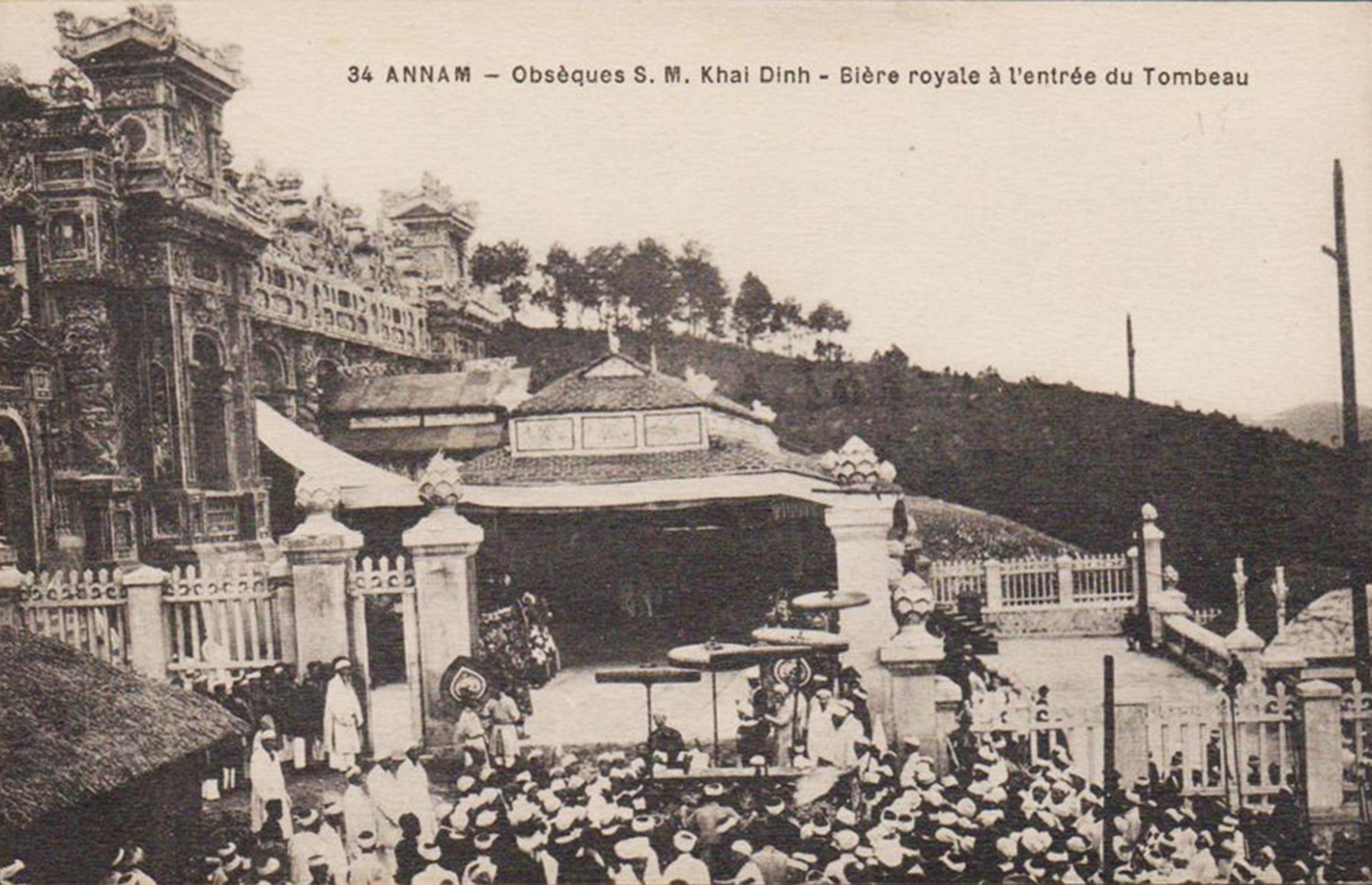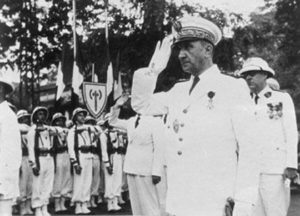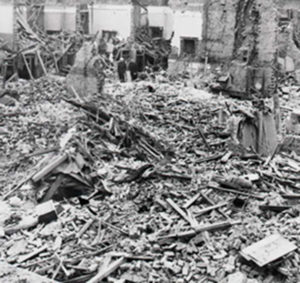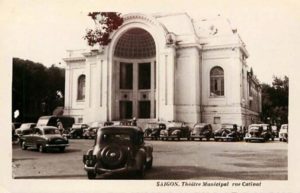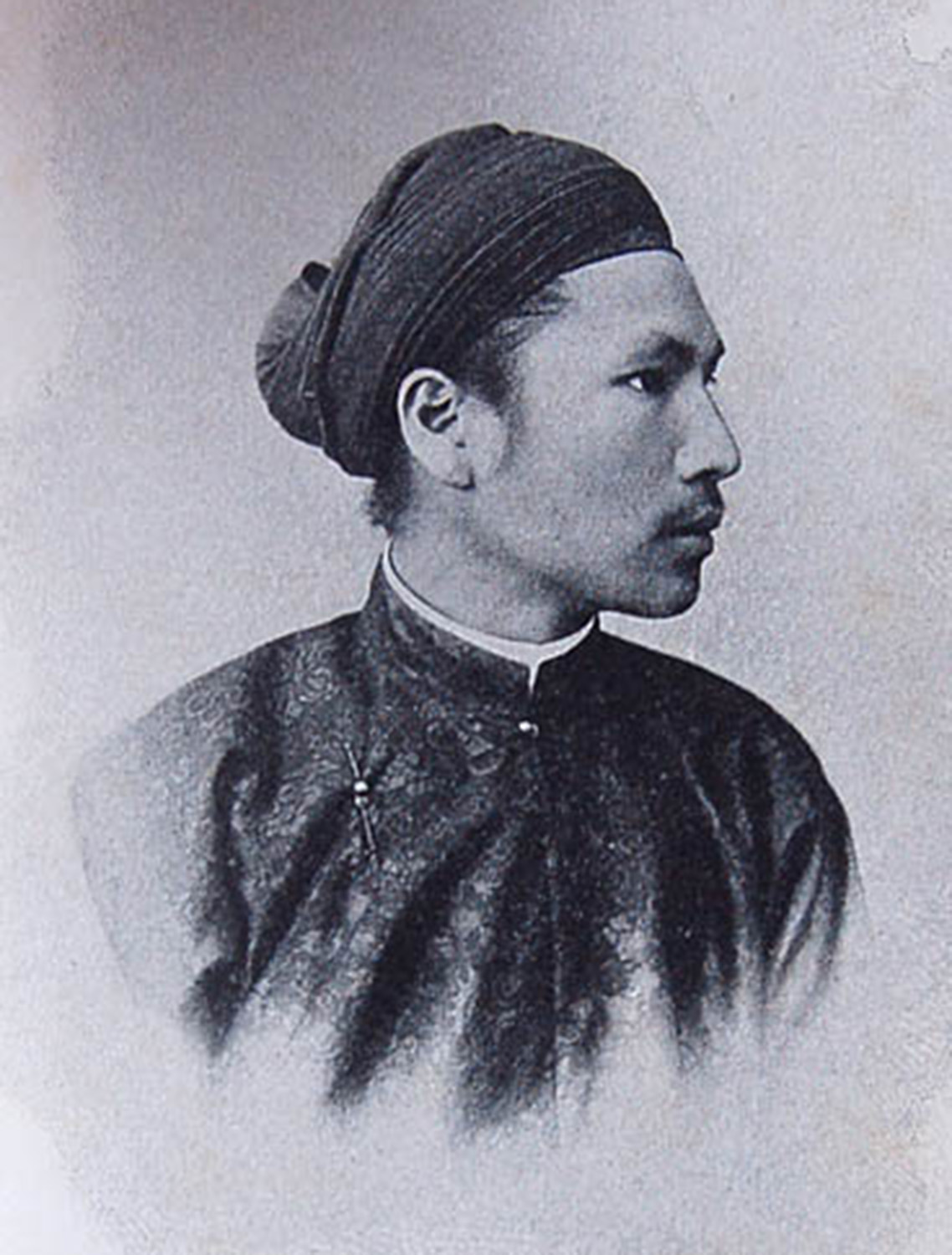
Prince Nguyễn Phúc Ưng Lịch, the former Emperor Hàm Nghi
Deported from Indochina in 1889 for his part in the Cần Vương uprising, the former Emperor Hàm Nghi spent the rest of his life in Algiers, living initially at the “Villa des Pins” and from 1908 until his death in 1943 at the “Villa Gia-Long” in El Biar. Here is a selection of press cuttings which describe Prince Nguyễn Phúc Ưng Lịch’s overseas visits, his artistic pursuits and his 1904 marriage to Marcelle Laloë, who gave him three children – Như May (born 1905), Như Lý (born 1908 and Minh Đức (born 1910).
“The King of Annam,” from Le Monde illustré, 23 February 1889
The Ministry of the Navy has recently received a telegram announcing that the King of Annam, Dong-Khanh, died in Hue on 27 January 1889 after a short illness.
Dong-Khanh was 25 years old. On 19 September 1885 he had succeeded his brother Ham-Nghi, whom the former regent Thuyet had led away from the capital of Annam after the attack of 5 July 1885. Ham-Nghi, dispossessed, led a miserable existence, resisting all attempts at conciliation until he was captured by the emissaries of Captain Boulangier.
We know that Ham-Nghi has just arrived in Algiers, where he has been installed in a villa at Mustapha. It is there that he learned of the untimely death of his successor.
The late young sovereign was very devoted to France. He leaves a three year old son. The telegram announcing the death of the King of Annam announced further that the mother of the former King Ham-Nghi had also died in Hue.
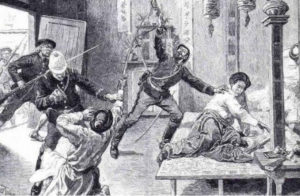
A drawing of the capture of Emperor Hàm Nghi
The capture of Ham-Nghi erased the last remnants of the insurgency in Tonkin.
We remember, in fact, that after his coup against General de Courcy in July 1885, Ham-Nghi provoked an uprising in the surrounding provinces and then came, repeatedly, to attack Hue and its environs.
It was thanks to the campaign led with intelligence and skill by Captain Boulangier that the fallen rebel is now in our power.
One afternoon, the captain’s company was informed that the former King of Annam, put to flight by the operations and pursuits of our skilled sharpshooters, had taken refuge with his companion Ton-Tat-Thiep, son of former Regent Ton-Tat-Thuyet, in a cai nha located in the small and remote village of Ta-Bao, hidden in the mountains of the haut Giaï.
The house was surrounded by the emissaries of Captain Boulangier and the door was broken down to reveal Ham-Nghi sleeping soundly next to Thiep, who had been awoken from sleep by the noise of the attack. Both had swords at their sides as well as some hand weapons, but resistance was useless.
Seeing his master taken, and to avoid the shame of the rebel king being dragged into captivity, Thiep tried to stab him; at that moment he was felled by a gunshot, because it was imperative that Ham-Nghi be captured alive. Thiep’s head was cut off and placed on a bamboo stake in the middle of bustling market of Dang-Kha.
Ham-Nghi himself offered no resistance and followed our troops to the place where later, the government fixed for him a date of departure. It was on the appeal of the dead king, Dong-Khanh, that the former ruler was exiled, and Algeria appeared to be the most suitable country, in its customs and climate, to receive the new captive. Ham-Nghi was taken on board the warship Bien-Hoa, commanded by Captain Caillard, and left Haiphong on 7 December last.
On Sunday 13 January, at about 3pm, the Bien-Hoa entered the port of Algiers. The King of Annam asked to be accompanied by his domestic staff. They comprised an interpreter, a steward and a cook.
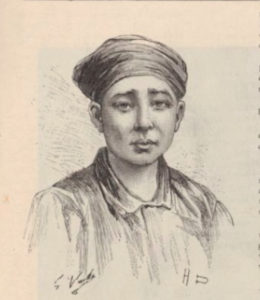
“Ham-Nghi, former King of Annam, prisoner of France in Algiers – drawing by M Vuillier according to the sketch by Jean Locquart”
Ham-Nghi is 19 years of age. His complexion is oriental, and his eyes, though small, are almond-shaped and breathe a lively intelligence. His cheekbones protrude and his entire face takes the form of a fairly regular oval. He is of short stature and beardless. We publish here a portrait of him which we obtained only after great difficulties, Ham-Nghi having only agreed to pose for a photographer on the formal order of the governor.
His Majesty wears excessively broad trousers made from calico or twilled cotton, together with coloured silk stockings. His feet are shod with sandals made from leather and velvet, adorned with gold chinoiserie and fine embroidery. Indoors, he wears only a long shirt or a long blue sleeveless tunic, rather like a woman’s blouse.
Ham-Nghi has now left the Hôtel de la Régence, where he stayed initially on his arrival in Algeria, to take possession of the princely Villa des Pins, located at Mustapha, near Algiers. It’s there that he has definitively fixed his residence.
At the time of his capture, various documents were found on his person, including several important notes indicating hiding places in the Citadel of Hue where it seems he had buried his personal treasures.
The captive king does not receive any visitors, and the information we can provide is all due to the kindness of his interpreter and his steward.
We give here, in addition to an authentic portrait of the king, a view of the residence of the Villa des Pins, in which which the rebel sovereign will remain in exile.
“The King of Annam in Médéa,” from L’Avenir de Bel-Abbès, 1 October 1891
The King of Annam, who has been interned for the last three years in Algiers, will be transferred this week to Médéa and placed under the supervision of the Général commandant of the subdivision. This measure is being taken as a result of the impulse of the young king to take flight and return to his country, which would have created the greatest difficulties in Annam.
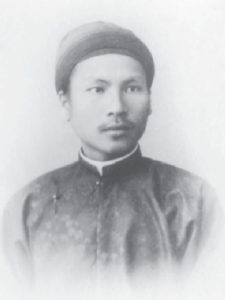
Prince Nguyễn Phúc Ưng Lịch, the former Emperor Hàm Nghi, in Algiers
The King, now 23 years old, is very intelligent; he has adapted very quickly to French customs, he wears our clothing with ease and he speaks and writes our language very correctly. It is possible that, abusing the great freedom which we have given him, he could have left one evening for any departure point along the coast, or even for the port of Algiers, where it would have been easy for him to embark on an English ship and remain hidden until the time of departure.
The King of Annam does not live in Algiers itself, but about three kilometres outside the city, in El Biar, where M. Tirman installed him in a charming villa surrounded by vast fields, and from which the king could escape easily, without his departure being noticed.
The personnel of his house comprise only a woman in charge of housekeeping services, an Annamite cook, and finally a Tonkinese secretary, who is also charged with monitoring the prisoner and accompanying him in his walks and in his visits, but whose services he often dispenses with.
It is understood how easily such monitoring could be foiled: the young king goes wherever he wants, whenever he pleases; thus, there are occasions, as it has been noticed, when he has returned to his home at rather a late hour of the night.
The Government general is concerned about this, and to prevent such prolonged stays in the city, sometimes until the next morning, which may facilitate his complete disappearance, it has ordered its prisoner to remain indoors at night time.
To be admitted to the Villa des Pins, current residence of the King of Annam, one has always needed special permission from the Government general, thus he has few visitors. But he has still gone everywhere, indeed while M. Tirman governed Algeria, he attended all of the great receptions, and the municipality invited him to all of its parties.
All of this will now change; the Government general of Algeria, now better informed about the intentions of the prisoner of France, has taken on its part measures of prudence and firmness, so that the king of Annam does not follow the example of the famous Tuareg leader, one of the assassins of the Flatters mission, who was interned in a small farm and took advantage of the situation to escape on horseback with one of the domestic servants.
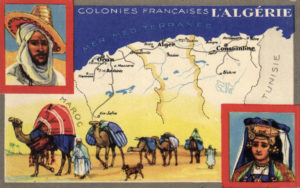
French Algeria
But the King of Annam will surely not complain, for France has made him a pension of 25,000 francs a year, so he will have enough money to live at ease in the beautiful countryside of Médéa.
“Prince Ung-Lich,” from Le Matin, 29 May 1893
The young Prince of Annam, Ung-Lich, currently interned in the neighbourhood of Algiers, has been authorised, upon his request, to come to France to visit Vichy.
We know that last year, the government allowed the young pretender to engage freely in the pleasures of bicycling. Several of our colleagues condemned this hobby, believing that it could facilitate at some point the flight of the young exile.
It is to Captain Gosselin that will probably accrue the delicate task of escorting Ung-Lich when he steps on French soil.
“The Prince of Annam in France,” from La Fraternité, 16 June 1895
Ham-Nghi, Prince of Annam, accompanied by Captain Gosselin, arrived recently in Paris, coming from Algiers, where the French government fixed his residence after dispossessing him of the throne of Hue.
The young traveller – he’s only 24 years old – wears the Annamite costume, a shirt without ornament and wide trousers, in grey cloth for everyday activities and in silk for special occasions. A black turban surrounds his Greek chignon, which closely resembles that of our women. Ham-Nghi’s hands and feet are extraordinarily small. His glove size is 5¾, they say – little more than that of a girl.
Excerpt from “Majesties in Exile,” in Le Gaulois, 5 January 1899
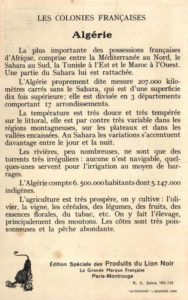
French Algeria
Another “fallen majesty” is Ham-Nghi, better known under the name of Prince Ung-Lich, who reigned in Annam and gave such a headache, to use a popular phrase, to our General de Courcy.
Ung-Lich lives in a delightful villa in the neighbourhood of Algiers, which the government has “gracefully” placed at his disposal.
The former ruler of Annam is a young man in his thirties and of strong artistic tastes. A man of great intelligence, possessed of a very cultivated mind, he consoles himself for his loss of power by indulging his passion for painting and music. It seems that he has a nice stroke of the brush, and paints excellent landscapes.
Last year, the Minister of Colonies allowed him to stay for a few weeks in Paris. Every day during that trip, Ung-Lich spent hours at the musee du Louvre, absorbed in the contemplation of artistic masterpieces. The guards mistook him for a Japanese art student. He was also a regular at the salon du Champ de Mars, and one could see him almost every evening at the Opéra or the Opéra-Comique.
In fact, where music is concerned, Ung-Lich has a preference for the works of Mozart, Wagner, Saint-Saëns and Massenet, proving the eclecticism of his artistic tastes. At El Biar, the neighbourhood inhabited by the prince, he performs on the piano the music of his favourite composers.
One of his main distractions is to attend performances at the Grand-Théâtre d’Alger, having been granted this right. In short, the French Government does not keep him under too close surveillance, and has even given him a nice pension of 25,000 francs per annum, not counting his purely free use of the villa. Ung-Lich can receive visits from his friends at El Biar, and often improvises instrumental music sessions there.
“Happiness in Obscurity,” from L’Aurore, 7 October 1904
One day in 1888, Captain Gosselin-Lenôtre, brother of the distinguished historian and brilliant writer of the plays Colinette and Varennes, took charge of a 15 year-old Annamite who had been captured by our troops. It was Prince Ham-Nghi, ruler of Annam since the age of 12, who had fomented uprisings and whose army had surrounded the palace occupied by General de Courcy. Captured at 7pm on 1 November 1888, he was transported to Saigon, and from there to Algiers, where since 1889 he has been interned under the name of Prince Ung-Lich.
In Algiers, the prince – who does not lack freedom – has fallen in love with a pretty girl and will marry her in a few days. Mlle. Laloë is the daughter of the President of the Chamber at the Algiers Court of Appeal. When first hearing about the marriage, her father did not approve of the match, but the girl loved the former emperor and managed to convince him.
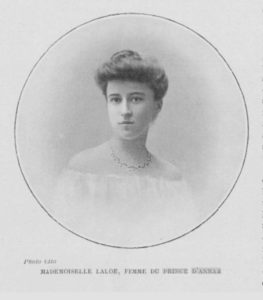
Marcelle Laloë, who became Prince Nguyễn Phúc Ưng Lịch’s wife, from Le Figaro-modes à la ville, 15 November 1904
It’s in Algiers that this rather unexpected marriage will be celebrated. The couple, in the meantime, has come to spend an enjoyable vacation in Versailles.
The former monarch has become very European, and during the afternoons he goes out into the park to paint the château of the Sun King and to dream of fallen splendours.
Sometimes in Algiers, sometimes in Avesnes at the family home of his protector Mr. Gosselin-Lenôtre, the prince has seen many golden days: he receives a 30,000 franc annual pension from France, and this amount will, it seems, be doubled on his marriage. This transplanted Annamite must have little cause to regret his kingdom.
“The Ex-Emperor of Annam marries a Frenchwoman” by Fernand Hauser, from Le Journal, 4 October 1904
Recently, in a park in Versailles, a young Annamite sat down in front of an easel and conscientiously began to paint. Who was this young Annamite, next to whom stood, respectfully, a man who looked suspiciously like a plain-clothes policeman?
“It’s the former Emperor of Annam,” said one of the staff of the château whom I questioned.
“The former Emperor of Annam?” I immediately set off to find out more information and learned that this young Annamite, wearing cai ao and cai quan and coiffed with cai khan, was, indeed, the famous former Emperor of Annam, Ham-Nghi, who was dethroned by France in 1885, captured by our troops in 1888 and interned in Algiers in 1889.
“And for what occasion has the former Emperor of Annam come to Versailles?” I asked the person who had informed me so kindly.
“He comes, they say, to give his heart to his fiancée.”
“An Annamite?”
“No, a Frenchwoman.”
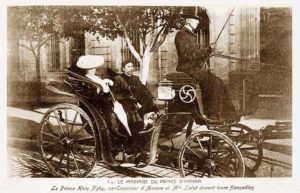
The marriage of Prince Nguyễn Phúc Ưng Lịch to Marcelle Laloë in 1904
This strange story interested me, because, like any journalist, I am curious. I followed the former emperor to the hotel where he was staying, and presented him with my card. It was nearly noon; the lunch hour had arrived, yet despite the indiscretion of my visit at this time, the ex-Emperor received me immediately.
We were seated opposite each other, in a living room decorated with antique furniture; on the walls, portraits of characters from the court of the great Sun King seemed to watch us.
“And how may I help you, monsieur?”
The ex-emperor was the first to break the silence.
“They told me that you are the former Emperor Ham-Nghi.”
The prince smiled. “They told you that.”
The emperor in exile
And he looked at me with his big eyes. The former emperor is small in stature; he must be young, but he definitely looks younger than his age; one would even say a young Adonis, an elegant young Adonis, and with a chignon. His face is lit by two ivory and extremely mobile eyes; his lips are topped by a drooping black moustache; when he smiles, the ex-emperor, who is unaccustomed to chewing Annamite betel, reveals teeth of dazzling whiteness; and when he raises his hands, one perceives that they are the finest in the room.
“And you have come to Versailles to marry?”
“Oh! That’s a private matter. I’m getting married, yes, but I’m not in Versailles for that; I know about a number of other French cities, so I also wanted to get to know Versailles. This is one of the most beautiful cities which has ever existed, the memories of yesteryear are abundant; at every step, it feels like the great shadow of Louis XIV will appear. And the Petit Trianon, so poetic, is the most troubling little place I know; at every corner, you expect to meet the guillotined queen. All the while, one thinks about the terrible revolutions of nations, the vicissitudes of kings, the fragility of thrones.”
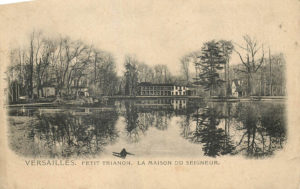
Versailles, Petit Trianon
All this is said in a soft voice, so soft that it is moving; one could believe that one was hearing a woman who lisped a little…. but only a very little.
“And you love to find a spot in some park grove where you can translate your feelings onto canvas?”
“Yes, I adore painting. The French scenery is lovely; the trees are so beautiful, especially in the autumn when the leaves are falling. It is very beautiful.”
“And will you remain for some time in Versailles?”
“No, I must leave very soon; I have been waiting for the the strike in Marseille to end; otherwise I would have left some time ago; the Ministry of Colonies is of the opinion that I have already spent too long in France.”
“So, you’re not a free man?”
“Oh! No, not since the day I was captured by French troops. For many years I have been a prisoner in a villa in Algiers; every time I want to travel, I need permission; to get married, I had to get permission.”
“You will marry a Frenchwoman?”
“Yes.”
“Of what religion?”
“Catholic.”
“So, you are baptised?”
“No, I profess the religion of Confucius; although it is a philosophy, more than a religion.”
“Have you been a prisoner for a long time?”
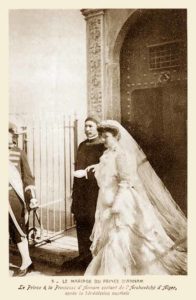
The marriage of Prince Nguyễn Phúc Ưng Lịch to Marcelle Laloë in 1904
“Twelve years, maybe more. I haven’t been counting.”
“You left Annam while you were still young?”
“I had reached an age of reason.”
“And you miss your country?”
“One always misses one’s country.”
“You still have, I think, the right to re-ascend the throne of your ancestors?”
“That right is incontestable; but it is contested.”
“And you hope?”
“I no longer hope for anything.”
“However, if one day….?”
A brilliant light shone in the eyes of the exile.
“I am not even permitted to see my country again.”
“And when you are married?”
“I think it will be the same; I console myself by thinking that France is a beautiful country, and my residence in Algiers is very agreeable.”
The deposed ruler rose and stretched out his hand.
“Goodbye monsieur. And thank you for your visit.”
The bride of Ham-Nghi
On leaving the Hôtel de France, I went to see a Versaillaise of my acquaintance who keeps abreast of everything that happens in the city of the Sun King, and I learned from him that the ex-Emperor of Annam, since his arrival in Versailles, has gone every day to the residence of a Lady Wenck, grandmother of his fiancée. This young lady was, in fact, passing her holidays with her grandmother.
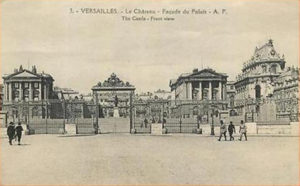
Versailles
Mlle. Marcelle Laloë, daughter of the President of the Chamber at the Algiers Court of Appeal, is a charming young lady of at least 20; the former Emperor Ham-Nghi became smitten with her and proposed marriage; this was an important matter.
At first, M. Laloë refused to endorse the union, because of the race and religion of Ham-Nghi. But the girl loved the ex-emperor; she wept, she pleaded; and now the marriage will be celebrated very soon in Algiers.
Ham-Nghi has now left Versailles, in fact, he left last Friday evening, travelling to Marseille where he was due to embark for Algiers yesterday; Mlle. Laloë and her father took the same ship. The former emperor left France with formal permission to marry, signed by M. Doumergue, Minister of Colonies.
At the Ministry of Colonies, I was given the following information about this marriage:
Ham-Nghi was crowned Emperor of Annam after Hiep-Hoa, successor to the famous Tu-Duc; he was born in 1871.
In 1885, Ham-Nghi fomented a revolt; his army surrounded the palace where General de Courcy was staying. The battle was terrible; General de Courcy, thanks to the soldiers of Colonel Pernot, managed to escape. Ham-Nghi fled into the mountains of Kouang-Si, from where he led a partisan war against France. Captured at 7pm on November 1, 1888, he was taken to Saigon, and from there to Algiers, where since 1889 he has been interned as the prince Ung-Lich.
The Government of Indochina has since given him a pension of 30,000 francs per year; on the occasion of his marriage, the pension will be increased to the sum of 80,000 francs.
The former Emperor will marry in a few days. Will he receive, on that occasion, the congratulations of his successor, Emperor Thanh-Thai? And will he think, on that joyful day, of the Spring Festivals over which he once presided in Hue, when he was the sovereign of Annam?
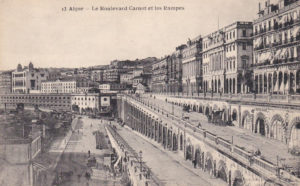
Colonial Algiers
Will he see again, in a flash of memory, the sculpted golden plough with which, every April, the “Emperor of the South” traced a furrow before his prostrating subjects, entreating the Buddha for enough crops to burst the barns?
“The Wedding of the Prince of Annam,” L’Ouest-Éclair, 11 November 1904
Algiers, 10 November – The marriage of the former prince of Annam with Mlle. Laloë, daughter of the President of the Chamber at the Algiers Court of Appeal, was celebrated this morning in the town of Algiers. A large crowd of guests, onlookers and friends attended the ceremony.
The prince wore national costume, a tunic of black silk, his long hair gathered in a chignon and held in place by a turban, also of black silk. The bride wore a simple white dress.
The Mayor of Algiers addressed to the newlyweds good wishes on his behalf and on behalf of the Algerian population. After the ceremony, the newlyweds went to receive the nuptial blessing of the Archbishop of Algiers; at least 30 people were received in the chapel. The ceremony was very short.
The Prince and Princess of Annam then went to the home of M. Laloë in Mustapha, where a lunch was attended by the elite of the Algerian population.
From “Births,” in La Revue diplomatique, 1 October 1905
We recall with pleasure the wedding of the very distinguished Prince of Annam, Ham-Nghi, who last year married a charming French woman, daughter of a counsellor at the Algiers court.
From their Villa des Pins at El Biar near Algiers, the Prince and Princess have just announced the birth of their daughter, Nhu-May.
Decree of 23 October 1906, from Bulletin officiel du Ministère des colonies, 28 October 1906
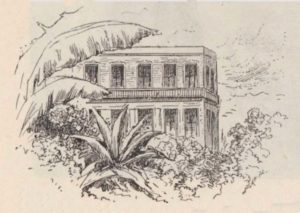
The Villa des Pins, which served as Prince Nguyễn Phúc Ưng Lịch’s home until 1908
Considering the request of 4 July 1906 made by the Prince of Annam, Ung-Lich, to obtain an advance of 200,000 francs which is necessary for the purchase of land and construction of a villa in El Biar (Algeria). Considering the report of the Governor General of Indochina.
A sum of 200,000 francs levied on the Pension and Welfare Fund of Annam will be placed at the disposal of the Prince Ung-Lich to permit the purchase of land and construction of a villa at El Biar (Algeria). This sum, non-productive of interest, will be reinstated in the Pension and Welfare Fund of Annam by means of 10 annual installments of 20,000 francs each, deducted automatically from the annual pension provided by the Government of Indochina to Prince Ung-Lich and eventually to his wife or to his children.
The Colonial Secretary is responsible for the execution of this decree.
Done at Paris, 23 October 1906.
Signed: A. Fallières.
From “Births,” in La Croix de l’Algérie et de la Tunisie, 30 July 1907
We announce the birth at El Biar last Wednesday of the second daughter of His Highness the Prince of Annam, who has received the graceful name Nhu-Ly (plum blossom).
“A Christmas Tree at the Villa des Pins,” from L’Afrique du Nord illustrée, 4 January 1908
On Tuesday last week, a party was held at the Villa des Pins. The Prince and Princess of Annam had the generous idea to give a few hours of joy to children from poor families in El Biar.
The little ones having barely arrived, they were carefully arranged in the front yard and the distribution of cakes, sweets and mandarin oranges began – each child was amply supplied. This scene was not, however, without a prelude.
A huge Christmas tree was installed in the courtyard. What a tree! Never had anyone seen its like. It was splendidly illuminated by electric lights, stars and candles of all colours, and a thousand toys were hidden in its branches.
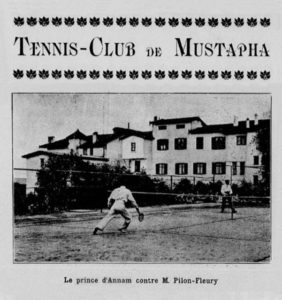
Prince Nguyễn Phúc Ưng Lịch playing tennis in Mustapha, from Illustration Algérienne, Tunisienne et Marocaine, 19 January 1907
Accompanied by the sounds of a gramophone record, the occasion was presided over by the charming little Princess Nhu-May, perched on the arm of her nanny, who directed the distribution of the toys with childlike pleasure. The “harvest” was indeed abundant – harlequins, dolls, drums, trumpets, diabolos, wooden horses and other toys, all patiently crafted throughout the previous year by Her Highness the Princess of Annam, found their way into the arms of the astonished little guests. They all received far more than they could carry.
When the day finally wound down, votes of thanks, made graciously by two senior guests, to the accompaniment of an Aragonaise on the phonograph, signalled the time to leave. Under the guidance of their teachers, the little group, heavily laden, went happily out into the night, heading back to their homes.
Prince and Princess, for the trouble you have taken, for the happiness you have given, thank you.
“The Ex-Emperor of Annam wishes to serve,” from Histoire de la guerre, par le Bulletin des Armées, 15 August 1914
The Prince of Annam, Ham-Nghi, former Emperor of Annam, in residence in Algiers, has just sent to the Minister of Colonies a letter in which he states that, in the light of current events, it is his duty to offer his humble services to France, a country which he has learned to know and love, in whatever capacity it would please the Minister to confer on him.
“Tu Xuan (Theu Sounn) Prince of Annam exhibits his paintings” by André Warnod, from Comœdia, 14 November 1926
At his home in El Biar, the man who was once crowned King of Annam likes to occupy much of his time painting. He has now decided to show his works publicly, and is giving an exhibition in Paris. If his name as King was Ham-Nghi, the name under which he exhibits his painting is Prince Tu-Xuan (Theu Sounn)
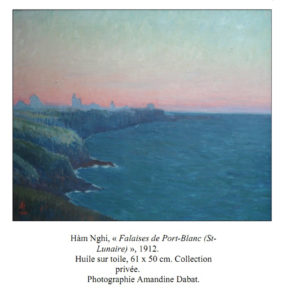
One of Prince Nguyễn Phúc Ưng Lịch’s paintings, reproduced from “Hàm Nghi artiste: le peintre et le sculpteur” by Amandine Dabat
While he supervised the hanging of his paintings in the Galerie Mantelet like a professional painter, the prince agreed to tell us about the pleasure he gets from painting. Coiffed with a turban, and wearing a grey suit with a half-European, half Asian cut, he is a man with an energetic face. He has very sharp eyes and his thin drooping moustache adds much to the character of his physiognomy.
The prince talks readily about painting, which, along with music, opened up to him after his exile a welcoming place of refuge. While he struggled at first to understand and speak French, he found that he could easily express himself through the language of the fine arts. Thus was an immense world of new sensations opened up for him. His studio became his preferred residence. At El Biar, his workshop occupies part of the lower floor of his villa; it is a large room paved with marble and illuminated from above. He spends much of his time there. The workshop is the centre of the house, a house surrounded by tall pine trees, a house to which so many of his memories are attached. Was it not there that his children were born and grew up?
The prince did not, strictly speaking, have an art teacher; he learned to paint according to his own heart; but the artists of Algiers have always been regular guests at his house in El Biar.
While we spoke of his studio and his painting, we thought, while looking at him, about that legendary Annamite hero, the little king aged 15 who spent three years in the forest trying to evade our soldiers. What a painful and tragic past! Three worrying years until, betrayed by one of his supporters, he was delivered to those who were chasing him.
Legend has it that Ton-That-Thiep, who had fiercely pushed the king into the resistance, rushed towards him at the point of his capture trying to kill him, so that he would not fall alive into the hands of the invader; but was shot before he could complete this act. The king, surprised in his sleep, jumped to his sword, but was disarmed.
What a picture of poignant melancholy is presented by this scene: the little captive king with his head down, dark and silent, seeing and hearing nothing, surrounded by French troops, while the bugles sounded in the fields outside. But these are memories which are so painful that we dare not invoke them.
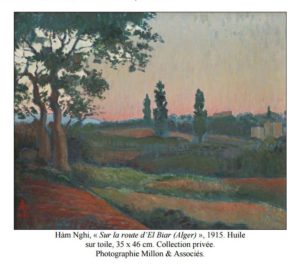
One of Prince Nguyễn Phúc Ưng Lịch’s paintings, reproduced from “Hàm Nghi artiste: le peintre et le sculpteur” by Amandine Dabat
Prince Tu-Xuan, at this exhibition, has presented landscapes painted in oil and drawn in pastels. He likes to capture the fleeting effects of sunsets at that moment when the skies are lit with thousands of lights, or to present the imposing mass of great trees or the delicate silhouettes of pines against the clear sky – those same tall pines which surround his home at El Biar under an Algerian sky, so far from his country of Annam.
“About an Annamite Prince, Painter and Sculptor” by E Dejean de la Batie, from L’Écho annamite, 25 February 1925
Oh! Let’s exile nobody! Oh! Exile is ungodly! – Victor Hugo
“At the place Saint-Philippe du Roule, another gallery is currently showing the paintings and sculptures of a prince who was emperor.” Thus begins a paragraph – less than 20 lines – which appeared recently in l’lntransigeant.
So much in so few words!
Above all what errors, because the paragraph which follows the above passage reflects its author’s complete ignorance of the events surrounding that which colonial historians call the “Ambush of Hue” of 1885, which marked with a bloody trace a painful page in the history of Franco-Annamite relations.
Of him who was its hero and most unfortunate victim – because he lived through it; because, as a prisoner of imperialism, he was exiled, far from his land and the throne of his ancestors on which he had only just ascended – the Parisian press evokes both the sad past and the present melancholy, while recognising in him an artist of great value.
Following in the footsteps of colleagues in the Metropole, the Cochinchina newspapers have reproduced a photograph representing the fallen majesty, standing before his paintings, in the company of M. Albert Sarraut, former Governor General of Indochina and former Minister of Colonies. The latter freshly shaven, fat bellied, with the arrogant and disdainful air of the plush financier; and the former, in a black turban, wearing national costume in memory of his absent country!
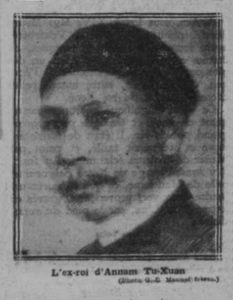
The artist Prince Tu-Xuan, aka Prince Nguyễn Phúc Ưng Lịch
Ham-Nghi has the grey beard of scholars from his home country which one hardly ever sees any more, the reserved attitude, the resigned smile, indeed all that seems to represent the serene philosophy of the Far East. Together, these men surely present a true picture of the relationship between conqueror and conquered!
Some have wanted to draw from Ham-Nghi a living example illustrating their thesis of reconciliation between the Annamites and the French, arguing that the former emperor, now known as “M. d’Annam” and being the husband of a Frenchwoman and the father of métis children, is the imperial model of peaceful interpenetration of the two races. Yet nothing could be more further from the truth!
The case of H. M. Hàm-Nghi, indeed, far from advocating Viet-Phap entente, seems on the contrary to fight against it, and with what eloquence!
The prince undoubtedly holds such bitterness that even today he continues to remain silent about the details of his flight from Hue, led by Regent Ton-That-Thuyet and accompanied by the queen mothers, even queen grandmothers; or about his adventurous life, which lasted from 1885 to 1888.
To those writers who had the honour of approaching him and who, tempted by the hope of snatching from him some unreleased secrets – writers are naturally curious – questioned him on this subject, he would invariably reply: “What good is there in talking about it? Let’s talk of other things,” and would then turn the conversation to “other things.”
What terrible memories, quickly repressed, must have returned to him at those moments?What mysteries of his martyrdom did he entrust to his palette and communicate through his art works, in the silence of his studio? Mysteries which, perhaps, he will take with him to the grave.
Does he perhaps owe his talent to the ordeal he went through, because, for the artist as for the poet, that is often the way of creativity. Man is the apprentice, pain is the master.
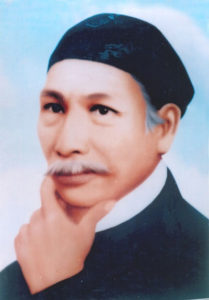
Prince Nguyễn Phúc Ưng Lịch in his later years
Prince Ung-Lich ascended the throne of Annam in that troubled time which followed the death of Tu-Duc. The Annamite empire then faced many difficulties: on one side, the French, who had already annexed Cochinchina, wanted to impose their protectorate on Tonkin; on the other, the ambition and rivalry of the regents Nguyen-Van-Tuong and Ton-That-Thuyet was devastating the Court of Hue – a banal spectacle typical of the history of any country in decline or lacking a firm hand to direct its destinies.
Regencies have always been full of intrigues which have affected nations and peoples. A minority reign may often be regarded as a misfortune for a nation’s subjects. Ham-Nghi certainly came to know this sad truth.
Tuong and Thuyet raised him to the supreme dignity in preference to his two older brothers, who, like him, were nephews and adoptive sons of Tu-Duc. These two “pillars of the Empire” feared losing their considerable influence and could not risk enthroning a master who was older and therefore more able to act by himself.
The ceremonies of the coronation took place without any foreign intervention. This was the initial cause of all the unhappiness of the unfortunate monarch. The Resident-superior of France in Hue, M. Rheinart, considered the dignity of France to have been undermined. He demanded that the court ask his permission to enthrone the young prince and that the coronation be held again in his presence.
Although no clause in any Franco-Annamite treaties had insisted on such formalities, indeed to the contrary, those treaties were unanimous in recognising the full independence of Annam with regard to its internal affairs, the court dignitaries obeyed.
The request for investiture was written in chu nom, which M. Rheinart saw as an impropriety. New challenges! The resident of France ordered it to be rewritten in Chinese characters, according to the old traditional used in honour of the relations between Annam and its secular suzerain, the Emperor of China.
Satisfaction was given to the desire of the representative of France, whose arrogance, however, Nguyen-Van-Tuong, and especially Ton-That-Thuyet, could not forgive. The two mandarins initially contained their anger – and for good reason! But they were only waiting for the opportunity to manifest it.
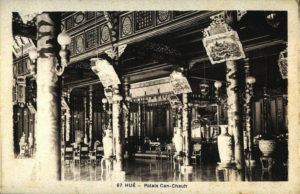
The throne in the Cần Chánh Palace (Điện Cần Chánh 勤政殿) in Huế Citadel
Their rancour deepened in the presence of the haughty and inflexible attitude of General de Courcy.
At this juncture, General Millot, Captain Guerrier, a sergeant and six hundred soldiers arrived in Hue from Hanoi. They prepared to hold talks on the issue of the establishment of the French protectorate in Tonkin.
Complications now arose again, borne of a pattern which we consider trivial today, but which were intensified by the intransigence of some and the pride of others. The French demanded to march their soldiers through the main gate of the Citadel. The court categorically refused, arguing the millennial custom which granted only to foreign ambassadors the right to enter this gate.
They had a lively discussion on this; negotiations on the fate of Tonkin were adjourned.
The French seemed to take pleasure in stirring things up.
One evening, a delegation of mandarins, carrying gifts, presented themselves to General de Courcy, aiming to address the question of precedence which was then in question. But the General refused to receive the delegates and sent them away with their presents.
This was the straw which broke the cup of humiliation inflicted on the Annamites.
Ton-That-Thuyet decided to avenge the affronts made to his country, and one night, as General de Courcy hosted a semi-formal dinner for French officers and civilian officials, the cannon of the Annamite citadel thundered suddenly and the French residence was burned to the ground. The next day, a military operation ensued. Results: 16 dead and 80 wounded on the French side and about 2,000 dead on the Annamite side.
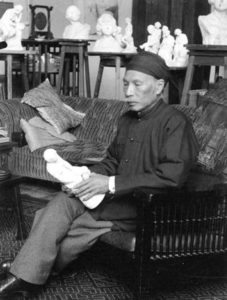
Prince Nguyễn Phúc Ưng Lịch in his later years
Taking advantage of this event, the royal family fled. The perilous life of Hàm-Nghi began; it ended three years later, following the betrayal of Truong-Quang-Ngoc and Nguyen-Dinh-Tinh. They surrendered their young emperor – he was 18 – to the French, who exiled him in Algeria.
The case of H M Hàm-Nghi is not unique. France, which boasts of being the most generous of the colonial powers, has another title of which it has no reason to be proud! – The nation which likes to proclaim itself the most democratic in the world is also one which has the highest number of exiled sovereigns it has dethroned after seizing their territories. Annam alone accounts for three princes overthrown by the will of the conqueror.
Of course, more good reasons to argue for reconciliation between France and its colonies.
Tim Doling is the author of the guidebook Exploring Huế (Nhà Xuất Bản Thế Giới, Hà Nội, 2018).
A full index of all Tim’s blog articles since November 2013 is now available here.
Join the Facebook group page Huế Then & Now to see historic photographs juxtaposed with new ones taken in the same locations, and Đài Quan sát Di sản Sài Gòn – Saigon Heritage Observatory for up-to-date information on conservation issues in Saigon and Chợ Lớn.


